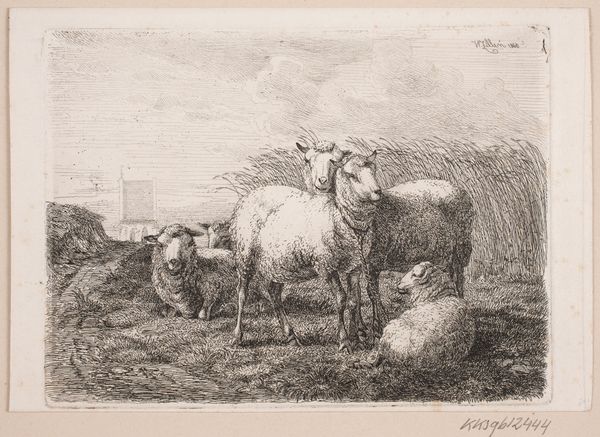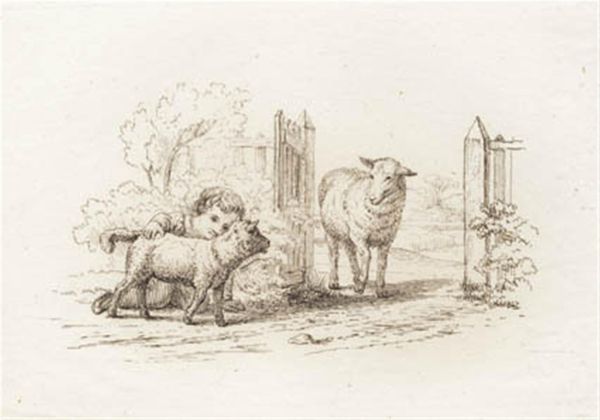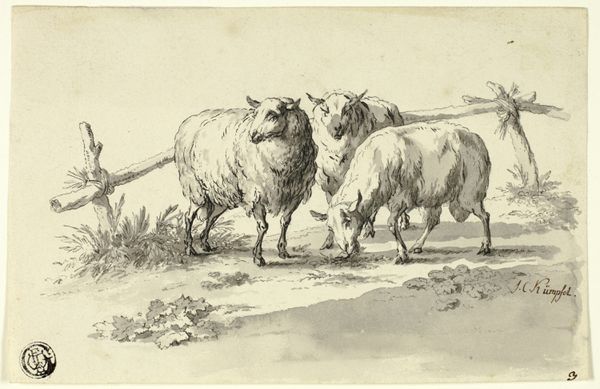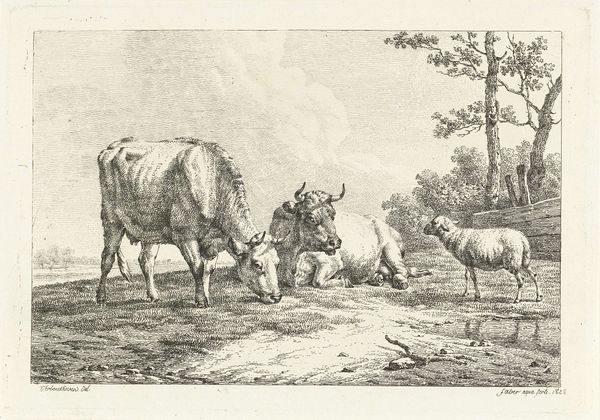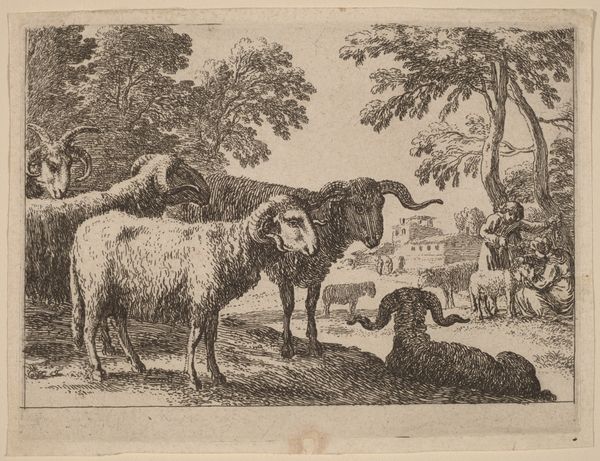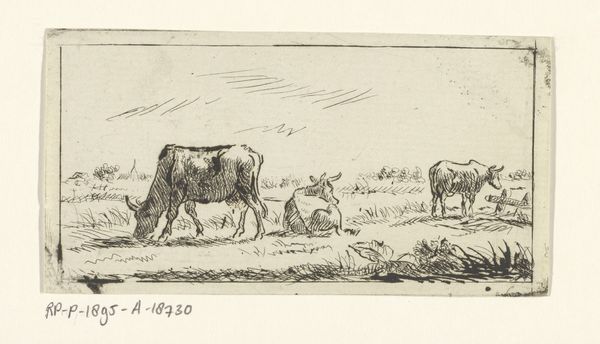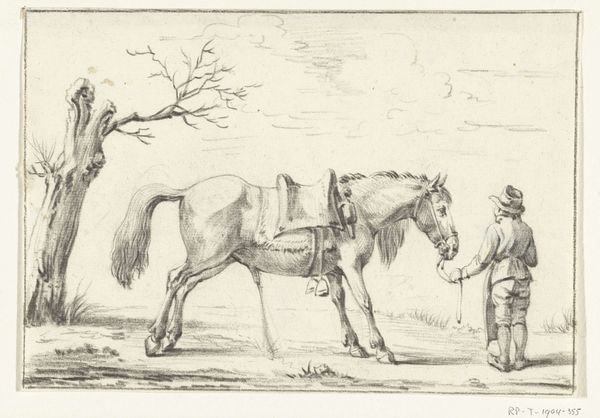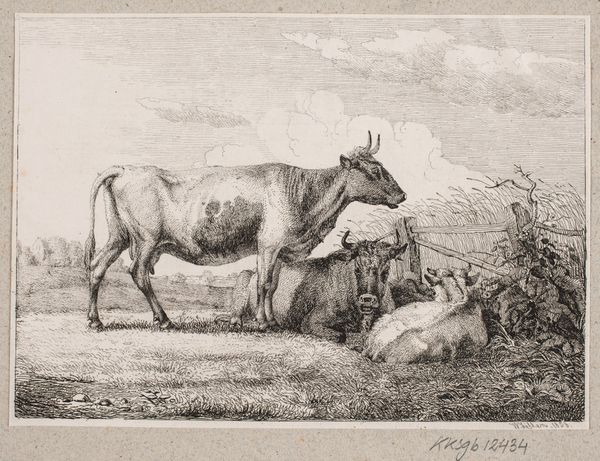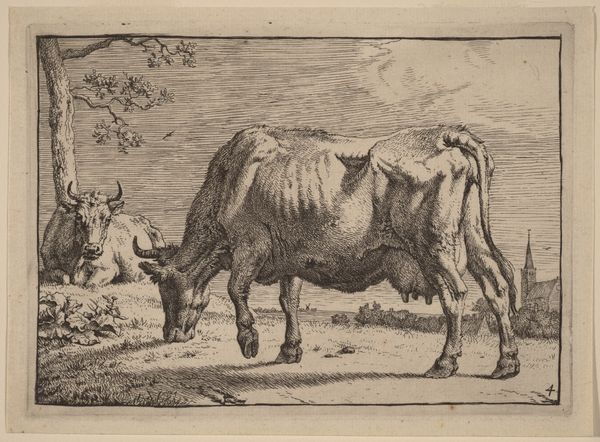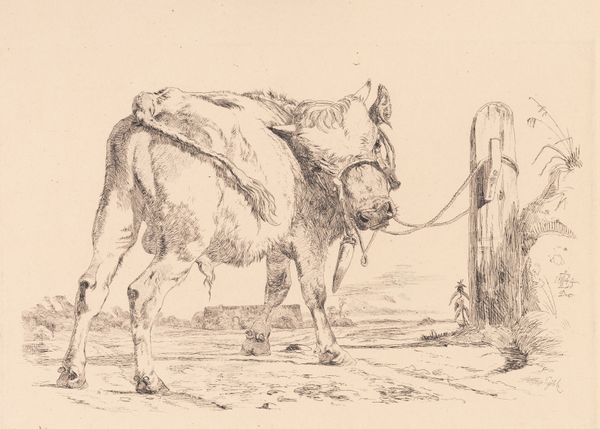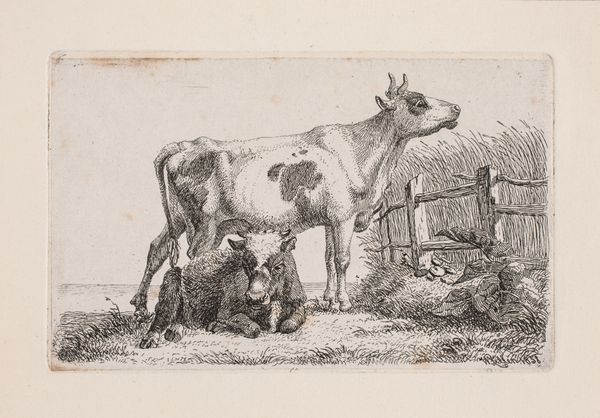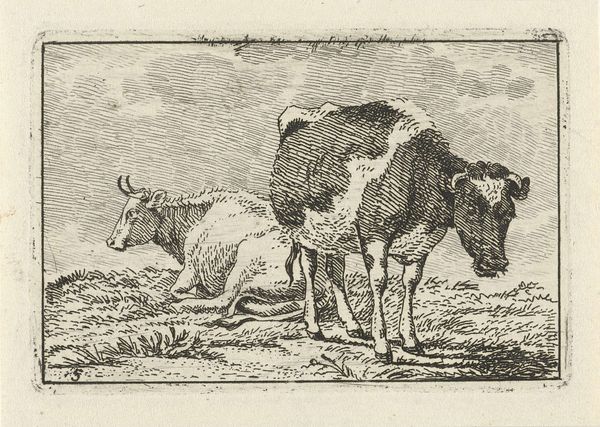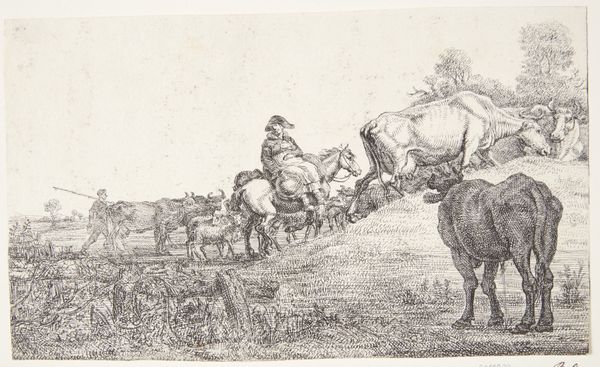
Illustration til "Halvhundrede Fabler for Børn" af Hey 1834
0:00
0:00
print, engraving
#
narrative-art
# print
#
landscape
#
figuration
#
romanticism
#
line
#
genre-painting
#
engraving
Dimensions: 94 mm (height) x 157 mm (width) (plademaal)
Editor: This is an illustration by Martinus Rørbye from 1834, titled "Illustration til 'Halvhundrede Fabler for Børn' af Hey," done as an engraving. It shows a child with two lambs. It feels quite gentle and innocent. What do you see in this piece? Curator: I see echoes of Arcadia, an idealized vision of pastoral life. Look at the sheep – they aren't simply animals; they represent innocence, purity, perhaps even sacrifice in the Christian symbolic language. And the child’s tender embrace… don't you think it speaks of a primal connection, a merging of human and natural innocence? It's potent imagery that transcends mere illustration. Editor: Sacrifice? I hadn’t thought of that. It seems a bit heavy for a children’s fable, though. Curator: It's crucial to understand that the symbolic language in art isn’t always overt, especially during the Romantic period. Consider the role of animals in folklore and myth – often stand-ins for human virtues or failings. The gate in the background – does it feel like containment to you, or passage to something new? Think about what these symbols might have meant to an audience steeped in Christian parables and agrarian life. Editor: I guess I assumed it was just part of a farm scene. The idea of the gate as a transition makes sense though, as if childhood innocence is meeting a wider world. Curator: Exactly. The images and their deeper meanings live through changing cultures and generations of people. By engaging in their visual language we come into conversation with their emotional weight and importance to culture over long stretches of time. We've merely scratched the surface today but I'm sure our listeners will think differently about pastoral scenes from now on! Editor: I definitely will. It’s amazing how much meaning can be packed into such a simple image. Thanks for shedding light on the deeper symbols at play.
Comments
No comments
Be the first to comment and join the conversation on the ultimate creative platform.
